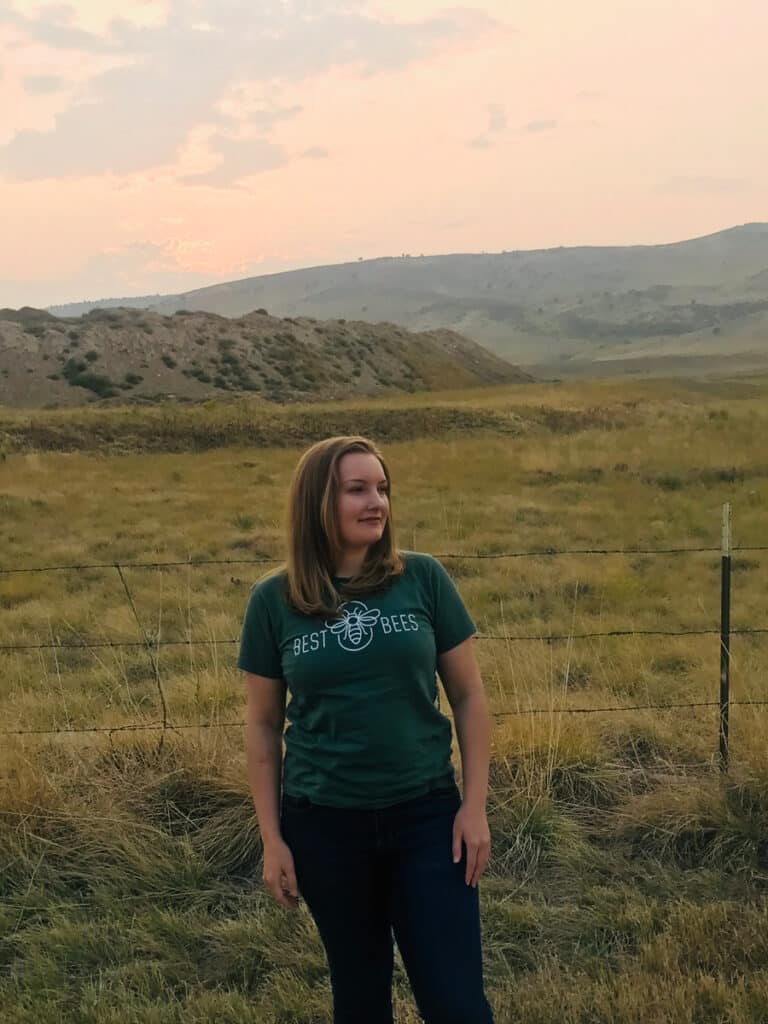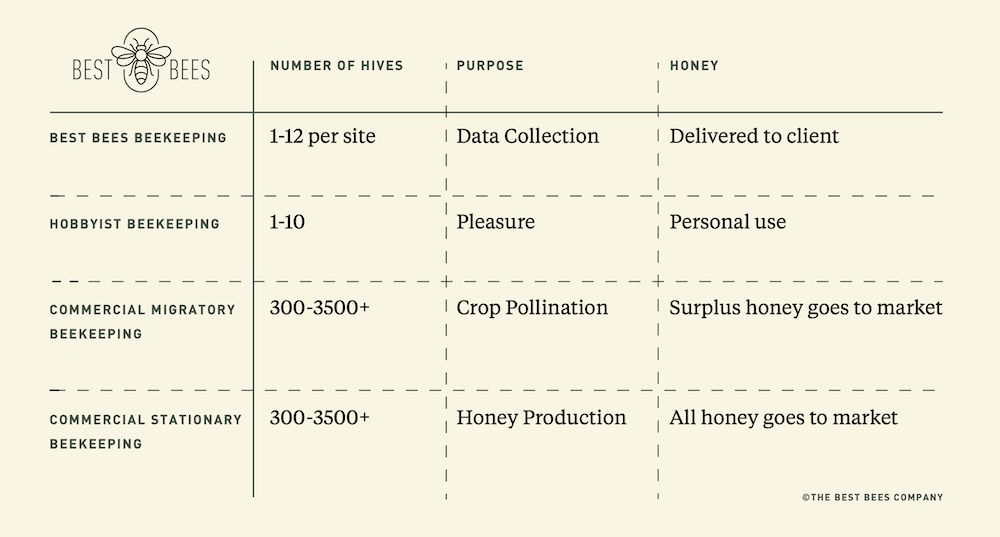#NextGenBeekeeper is a series of profiles and features on the lives of the next generation of beekeepers emerging in the field. Keep an eye out on our social media for the #NextGenBeekeeper tag.
Name: Samantha Schloeman
Age: 24
Pronouns: She/Her
Hometown: Freehold, NJ
How long have you been at The Best Bees Company?: Almost 5 years
Position/title: Regional Coordinator West
Samantha in front of Colorado mountains
How did you get into beekeeping?: I applied for an internship after hearing about Best Bees from a classmate and quickly fell in love with beekeeping. I worked part-time between classes and joined the team full-time after graduating.
You have a unique experience with beekeeping, can you tell us about it?: At the height of my beekeeping days, I was in the field 4 days per week. I loved working outdoors, exploring New England, and caring for these amazing creatures. I took a break to finish my undergraduate studies and when I returned, my sting reactions had worsened significantly. Unfortunately, I developed an allergy to bee venom and could no longer go into the field independently. It was difficult to accept. Thanks to the support and guidance from my coworkers, I was able to adjust my role and continue to work with bees indirectly.
Why do you think it is important to keep bees or do the work you’re doing?: Beekeeping supports local food systems, promotes floristic diversity, and creates $20 billion for the agriculture industry annually. Additionally, bees have this amazing ability to captivate our imaginations and get us thinking about the relationship between our society and the natural world. In a major urban area, a beehive on the roof of an office building will spark spirited discussions among employees, managers, and sustainability directors. These conversations can evolve into why and how we can design urban spaces that include natural systems as a means to achieve sustainability goals.
Tell us a little bit about your role and what it entails: As regional coordinator West, I support the beekeepers in LA, SF, Portland, Seattle, Salt Lake, Denver, Chicago, Houston, and Pittsburgh. I create beekeeping manuals, set visit schedules, assist with the training process, and provide on-call support when staff encounter a tricky beekeeping problem.
What’s your favorite part about working at Best Bees?: I’ve always been encouraged to make my position work best for me. Since joining the team in 2016, I’ve graduated, developed a life-altering allergy, joined a new department, and moved halfway across the country! Each step presented new challenges, but Best Bees gave me the flexibility and the trust to define the path that aligned with my ambitions. I’ve not only grown as an employee, but as an individual, and that’s gotta be my favorite part about working here.
Samantha working from her home office
How does beekeeping in the West Coast differ from that in the East?: The different approaches to East and West coast beekeeping can mostly be attributed to climate. On the East coast, winter settles in quickly and temperatures consistently stay below freezing. East coast bees hunker down in the winter, conserving heat and energy by clustering together in a reduced metabolic state. On the West coast, winters are much milder. Some cities, like SF and LA, rarely get cold enough for the bees to enter their dormant state. Consequently, these bees remain active, raising young and foraging whenever pollen and nectar are available. We check on our West coast colonies throughout the winter; unlike the East, where it gets too cold to open the hive. There are other regional differences too; for example, beekeeping in the Pacific Northwest is nothing like in the Rockies!
How was that adjustment for you? Did you learn anything new about bees? About yourself?: I think I’m still adjusting! The shift has brought up more questions than answers. Often, what I believe are fundamental beekeeping techniques, through the lens of my East coast experience, aren’t guaranteed to work in the West. I’ve learned so much about bees; how they respond to wildfires for example. When there’s too much smoke in the atmosphere, it obscures the polarized light that the bees use as a “compass” for navigating to flower patches. They stay in the hive, often “bearding” to thermoregulate, and stick to closer flowers if they’re running low on pollen and nectar. I’ve realized how important it is to keep learning, question everything, and acknowledge that sometimes what we believe to be true is entirely context dependent.
What is your favorite cool bee fact?: Guard bees protect their colony from predators (mostly wasps or yellow jackets) through a process called balling. They surround the intruder in a tight cluster of bees and instead of stinging, they beat their wing muscles to generate heat. The heat within the center of the ball kills the intruder. In this way, a small group of bees can take down a predator that they could never defeat on their own.
Honesty time: are you afraid of bees?: Since developing the allergy my trepidation around bees has definitely increased! I know that they won’t sting unless provoked, so I always give them a ton of personal space.
Would you rather be a queen bee or a worker bee?: I think I’d rather be a worker bee because they get to see the world! I love to travel and I’d get restless staying inside the hive for most of my bee life.
What are you up to when you’re not managing our West Coast wing?: Reading science fiction, playing with my cat Phineous, practicing yoga, and exploring my town’s hiking trails. I’m hoping to work up to some of my area’s major peaks by next summer.
Is there anything that you’ve been working on or that you’re excited about that you’d like to promote?: We’re building an amazing team of beekeepers across the US, the collective wisdom of which is incredibly vast! I believe that we’re poised to continue improving hive health year over year. If you’re interested in bees out West, reach out!








